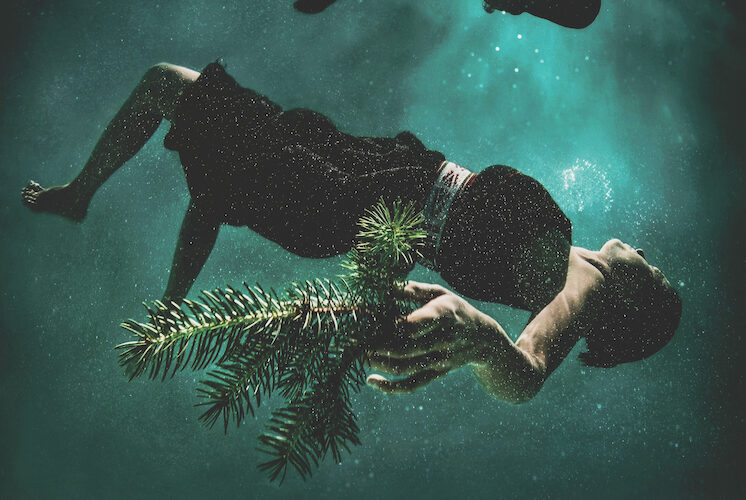BY MADISON WILKINSON
Speaking with Light: Contemporary Indigenous Photography highlights the dynamic ways that indigenous artists have leveraged their camera lenses over the past three decades to reclaim native representation and affirm their own existence, perspectives and traumas. The exhibition, originally organized by the Amon Carter Museum of American Art in Texas, is one of the first major museum surveys to explore this important cultural transition, featuring works by more than 30 contemporary, indigenous photographers, whose work highlights both the historically underrepresented views and voices of Indigenous communities.
The works aim to bring attention to longstanding cultural misrepresentations by focusing in on Indigenous perspectives and exploring theme of history, loss, identity and representation, telling their own stories from both in front of and behind the lens.
The exhibition features photographs from emerging and established artists, including Hulleah Tsinhnahjinnie (Taskigi/Diné), Wendy Red Star (Apsáalooke), Nicholas Galanin (Tlingit/Unangax), and Jeremy Dennis (Shinnecock). The show will also include dynamic installations by Kapulani Landgraf (Kanaka´Ōiwi), Jolene Rickard (Skarù:rę/Tuscarora), and Alan Michelson (Mohawk member of Six Nations of the Grand River).
Images on display such as Zig Jackson’s, Indian Man on the Bus, Mission District, San Francisco, California, 1994 to Nicholas Galanin’s Get Comfortable, 2012, and Cara Romero’s, Evolvers, 2019 escort museum-goers through history, showing the intricacies and at times complexities when indigenous culture meets a 21st century United States of America.
John Rohrbach, senior curator of photographs at the museum and co-curator of the show, says: “This exhibition was born of internal questions around how to interpret the Carter’s extensive holdings of photographs of Indigenous subjects, taken by white photographers. It was to make sure Indigenous voices were front and center. I could bring 30-plus years of curatorial experience to it, but I am a US citizen of German- Danish ancestry. Will [Wilson] graciously joined the project in its early stages as a co-curator, and immediately played a fundamental role in shaping its themes.”
Wilson, a photographer himself, describes the show as a “project [he has] been working on his whole life.” He notes that, “historically, photographic representation of Indigenous cultures has been shaped by outsiders” and adds that “photography is a powerful tool to record and share our ongoing processes of survival, between ourselves and to a broader public. By revealing the broad nature of this work, we seek to expand sensitivity to these stories, understanding the breadth of contemporary Indigenous presence.”
The exhibition is split into a prologue and three thematic sections: Survivance, Nation, and Indigenous Visualities. The prologue explores the foundational agreements that led to the formation of what we now know as the United States. Wilson explains that “Indigenous national representatives were forced to accept unjust terms for their land.”
The second section, Survivance, explores the root of the term that describes the resistance and presence of Indigenous people in the face of attempted cultural and physical genocide. The final section, Nation, asks viewers to consider, “what it is to feel at home in this place without the Indian.” Wilson adds, “We have always been here, and continue to be. Many of the works bring this truth to the forefront, presenting a rupture, an alternative vision of the world that we must contend with.” Both Wilson and Rohrbach describe the exhibition, and the subsequent book, as a “platform for truth-telling.” A project like this is but one of many steps forward towards reconciliation.
Speaking with Light was curated by John Rohrbach, Senior Curator of Photographs at the Amon Carter Museum of American Art, and Navajo/Diné artist and curator Will Wilson, and is on view at the Denver Museum of Art beginning February 19, 2023, through May 21, 2023.

